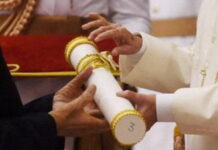Mission ADITYA-L1: Aditya L1 will be the first Indian mission to investigate the Sun from space. The spacecraft will be set in a halo orbit around the Lagrange 1 (L1) point of the Sun-Earth system, which is approximately 1.5 million kilometers from Earth. A satellite situated in a halo orbit around the L1 point has the significant advantage of uninterrupted solar observation. This will enhance the ability to observe solar activity and its impact on space weather in real time. Using electromagnetic and particle and magnetic field detectors, the spacecraft is equipped with seven payloads to observe the photosphere, chromosphere, and exterior layers of the Sun (the corona). Using the unique vantage point L1, four payloads directly observe the Sun, while the remaining three payloads conduct in-situ studies of particles and fields at the Lagrange point L1. This allows for significant scientific studies of the propagation of solar dynamics in the interplanetary medium.
The suits of Aditya L1 payloads are anticipated to provide the most vital data for comprehending the problem of coronal heating, coronal mass ejection, pre-flare and flare activities and their characteristics, the dynamics of space weather, the propagation of particles and fields, etc.
Chandrayaan 3: Know the educational qualifications of the brains behind India&;s moon mission
Science Purposes
The primary scientific objectives of the Aditya-L1 mission include:
- Dynamics of the solar upper atmosphere (chromosphere and corona).
- The investigation of chromosphere and corona heating, the physics of partially ionized plasma, the initiation of coronal mass ejections, and flares.
- Observe the in-situ particle and plasma environment to provide data for the study of the Sun’s particle dynamics.
- The physics of the solar corona’s heating mechanism.
- Plasma coronal and coronal loops diagnostics: Temperature, velocity, and density are considered.
- CME evolution, dynamics, and origin
- Determine the sequence of processes that occur at multiple layers (chromosphere, base, and extended corona) that result in solar eruptions.
- The solar corona magnetic field topology and magnetic field measurements.
Space weather drivers (solar wind origin, composition, and dynamics)
The Aditya-L1 Aditya-L1’s instruments are calibrated to observe the solar atmosphere, specifically the chromosphere and corona. At L1, in-situ instruments will monitor the local environment. There are a total of seven instruments aboard, four of which conduct remote sensing of the Sun and three of which conduct in-situ observation.
Payloads with their primary scientific investigation capability.
| Type | Sl. No. | Payload | Capability |
|---|---|---|---|
| Remote Sensing Payloads | 1 | Visible Emission Line Coronagraph(VELC) | Corona/Imaging & Spectroscopy |
| 2 | Solar Ultraviolet Imaging Telescope (SUIT) | Photosphere and Chromosphere Imaging- Narrow & Broadband | |
| 3 | Solar Low Energy X-ray Spectrometer (SoLEXS) | Soft X-ray spectrometer: Sun-as-a-star observation | |
| 4 | High Energy L1 Orbiting X-ray Spectrometer(HEL1OS) | Hard X-ray spectrometer: Sun-as-a-star observation | |
| In-situ Payloads | |||
| 5 | Aditya Solar wind Particle Experiment(ASPEX) | Solar wind/Particle Analyzer Protons & Heavier Ions with directions | |
| 6 | Plasma Analyser Package For Aditya (PAPA) | Solar wind/Particle Analyzer Electrons & Heavier Ions with directions | |
| 7 | Advanced Tri-axial High Resolution Digital Magnetometers | In-situ magnetic field (Bx, By and Bz). |




